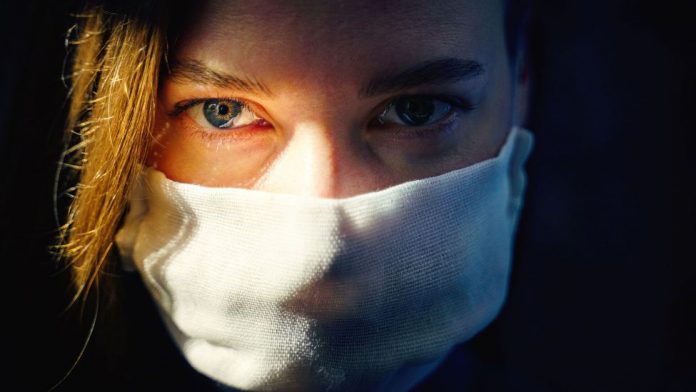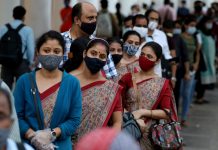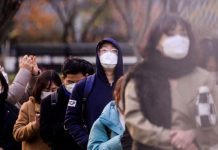Experts watch the Omicron strains as cases rise again.
COVID-19 has been upending daily life in the United States for almost three years as SARS-CoV-2, the virus spreading the disease, has caused surges in infections across the country. In some ways, the virus is under better control since the first cases were identified here in January 2020. But COVID-19 is still a threat—no one can predict when a new strain might surface, and many questions remain.
In early 2023, the Omicron variant continued to drive cases with the rise of a new subvariant called XBB.1.5. Experts are still learning about this new strain of the virus, which they believe may be the most transmissible one so far.
While the vaccines that are available in the U.S. were designed to protect against the original strain of the coronavirus, scientists have designed a booster that has shown to be effective against the Omicron variant and BA.4/BA.5 subvariants, and they continue to work on updating it.
Four vaccines are being administered from Pfizer-BioNTech, Moderna, Johnson & Johnson, and Novavax, and the Centers for Disease Control (CDC) endorses a clinical preference for the Pfizer and Moderna shots over J&J, based on evidence of vaccine effectiveness, safety, and rare adverse events. Vaccines are available for infants, children, and adults ages 6 months and older, and almost everyone ages 6 months and older can get a Pfizer or Moderna bivalent booster shot that protects against both the original virus and two Omicron strains. A Novavax booster is available for adults who cannot take the Pfizer or Moderna vaccines, but it may not protect against recent Omicron variants.
Scientists and public health officials continue to work as quickly as possible to address key questions such as how COVID-19 affects the body; why some people have Long COVID (or continuing symptoms the CDC calls “post-COVID conditions”); and the best ways to improve upon the vaccines, test for COVID-19, and treat people who are infected.
Below is a list of nine things you should know about the coronavirus.
1. COVID-19: By the numbers
The number of people who have died from the disease in the U.S. passed one million in 2022. By late August of this year, the number of people who have been infected with the virus here had surpassed 98 million. The CDC provides numbers in a COVID Data Tracker that refreshes every weekday. But those numbers are based on modeling and could be revised with new data; the true numbers are more difficult to track, since not everyone who gets the virus gets tested, and home test results aren’t included in the CDC data.
COVID-19 surges can vary by location. The CDC offers a COVID-19 by County tool that can help people determine the level of risk in their county or one where they are traveling.
2. The virus can spread in multiple ways.
According to the CDC, COVID-19 is spread in three main ways:
Breathing in air when close to an infected person who is exhaling small droplets and particles that contain the virus
Having these droplets and particles land on the eyes, nose, or mouth
Touching the eyes, nose, and mouth with hands that have the virus on them
In addition, droplets can land on surfaces, and people may get the virus by touching those surfaces, although, according to the CDC, this is not thought to be the main way COVID-19 spreads.
Anyone who is infected with COVID-19 can spread it to other people, even if the infected person does not have symptoms, according to the CDC. In general, the more closely you interact with others and the longer that interaction, the higher the risk of COVID-19 spread. Indoor spaces are more risky than outdoor spaces.
3. The virus continues to change.
Outbreaks of COVID-19 have come in waves in which a surge of new cases typically is followed by a decline in infections. A loosening of restrictions on mask-wearing and other mitigation efforts can precipitate a wave, as can an event or celebration period such as the winter holidays, when people are more likely to travel and gather indoors.
New variants of the virus have also prompted waves. Over the last two years, the variants Alpha, Beta, Delta (named by the World Health Organization after the Greek alphabet), and others have caused increases in cases, and illnesses ranging from mild (with no reported symptoms in some cases) to severe.
While Omicron and its subvariants have appeared to be less deadly than variants that preceded them, they have still had the ability to cause severe illness and death in some people.
Even when a virus strain is associated with mild illness, some people will get very sick, and experts worry that large outbreaks could overwhelm health care systems—and provide more opportunities for the virus to mutate, laying groundwork that could become a breeding ground for more new variants.
4. Long COVID is still not well understood.
Another challenge is what the CDC has called “post-COVID conditions,” also known as Long COVID. It is now estimated that nearly 1 in 5 adults and children, including healthy ones who had mild or no symptoms during their initial COVID-19 infection, experience Long COVID, which is when new, returning, or ongoing symptoms last for weeks, months, or years. These usually start four or more weeks after the initial infection, and range from fatigue and muscle pain to—in extreme cases—serious respiratory, digestive, and neurological symptoms, as well as autoimmune conditions and multisystem inflammatory syndrome in children (MIS-C), in which different body parts become swollen.
Experts still don’t know why this occurs. While there is still a lot to learn, dedicated post-COVID condition clinics around the country are working to help treat patients with long-COVID symptoms.
5. Vaccines are key to preventing severe illness and hospitalization.
Vaccination remains a key strategy for preventing severe disease. (Breakthrough infections have increased as immunity from the vaccines wanes over time and as new variants emerge, making infection prevention difficult.)
Each person should be able to choose the vaccine and booster—or boosters if eligible—for their situation, taking into account that recommendations on timing, dosage, and number of shots vary based on such factors as age and health status. More information on where to get COVID-19 vaccines and boosters is available on Vaccines.gov.
6. There are steps you can take to prevent infection.
There are other things you can continue to do to protect yourself. The CDC recommends the following preventive actions:
Wear a mask when appropriate: Anyone 2 and older should wear a well-fitting mask indoors in public if they live in an area where there is a high level of COVID-19, or in indoor areas of public transportation or transportation hubs. Also wear a mask if you are caring for someone who has COVID-19 or are sick yourself. Talk to your provider about the best use of a mask if you or someone you spend time with is at increased risk, if you are pregnant, or if you are unvaccinated or taking medication that weakens the immune system. The CDC provides a guide to masks and guidance for choosing a mask on its website.
Maintain a social distance: Do this inside your home when you have close contact with people who are sick, and indoors in public, especially if you are at risk for severe illness. Try to avoid poorly ventilated spaces and crowds.
Test yourself: There are different types of tests available, including tests that are sent to a laboratory and tests that can be done at home. If a test result is positive, you should isolate from others and let people you have had close contact with know. There is a CDC tool to help you figure out how long you need to isolate if you have been exposed or infected.
If you are pregnant: In August 2021, the CDC urged pregnant people to get vaccinated. Pregnant people are at an increased risk for severe illness from COVID-19 when compared to those who aren’t pregnant. They have a higher risk for preterm birth (delivering the baby earlier than 37 weeks), and possibly other poor pregnancy outcomes, according to the CDC.
There are other preventive strategies that could be helpful, depending on your situation. Further guidance for preventing infection is available on the CDC website.
It’s important to know that local rules may vary, and fully vaccinated people must follow local business and workplace guidance, and take precautions as directed in health care settings.
7. Experts continue to work on COVID-19 treatments.
There are also a growing number of treatments that can prevent severe illness from COVID-19, especially in people with underlying health conditions. Some are given intravenously or by injection, while others are available in pill form. So far, the National Institutes of Health has prioritized Paxlovid, which is the first antiviral pill to be given an FDA emergency use authorization (EUA). The drug, which must be started within five days of symptoms, had 89% efficacy in preventing severe illness in infected people in its clinical trial (which included only unvaccinated participants).
Remdesivir was the first and is still the only COVID-19 therapy to get full FDA approval; it was initially used only in hospitalized patients, but the most recent data has shown that it can help outpatients at high risk for severe disease.
8. If you feel ill, here’s what you should do.
Everyone should watch out for symptoms of COVID-19, whether or not they are fully vaccinated. Anyone who thinks they have been exposed should get tested and stay home and away from others. Symptoms can appear anywhere between 2 to 14 days after exposure. According to the CDC, symptoms may include:
Fever or chills
Cough
Shortness of breath or difficulty breathing
Fatigue
Muscle or body aches
Headache
New loss of taste or smell
Sore throat
Congestion or runny nose
Nausea or vomiting
Diarrhea
This list does not include all possible symptoms. The CDC will continue to update its symptoms list as it learns more about COVID-19.
You should call your medical provider for advice if you experience these symptoms, especially if you have been in close contact with a person known to have COVID-19 or live in an area with ongoing spread of the disease. The CDC has a Coronavirus Self-Checker that may help you determine whether you should seek help.
While most people will have a mild illness and can recover at home without medical care, seek medical attention immediately if you or a loved one is at home and experiencing emergency warning signs, including difficulty breathing, persistent pain or pressure in the chest, new confusion, inability to stay awake, or bluish lips or face. This list is not inclusive, so consult your medical provider if you notice other concerning symptoms.
9. Be aware of the information and resources that are available to you.
Because knowledge about the new virus is evolving rapidly, you can expect information and recommendations to change frequently. Threats like COVID-19 can lead to the circulation of misinformation, so it’s important to trust information only from reputable health organizations and sources such as the CDC and the WHO.































